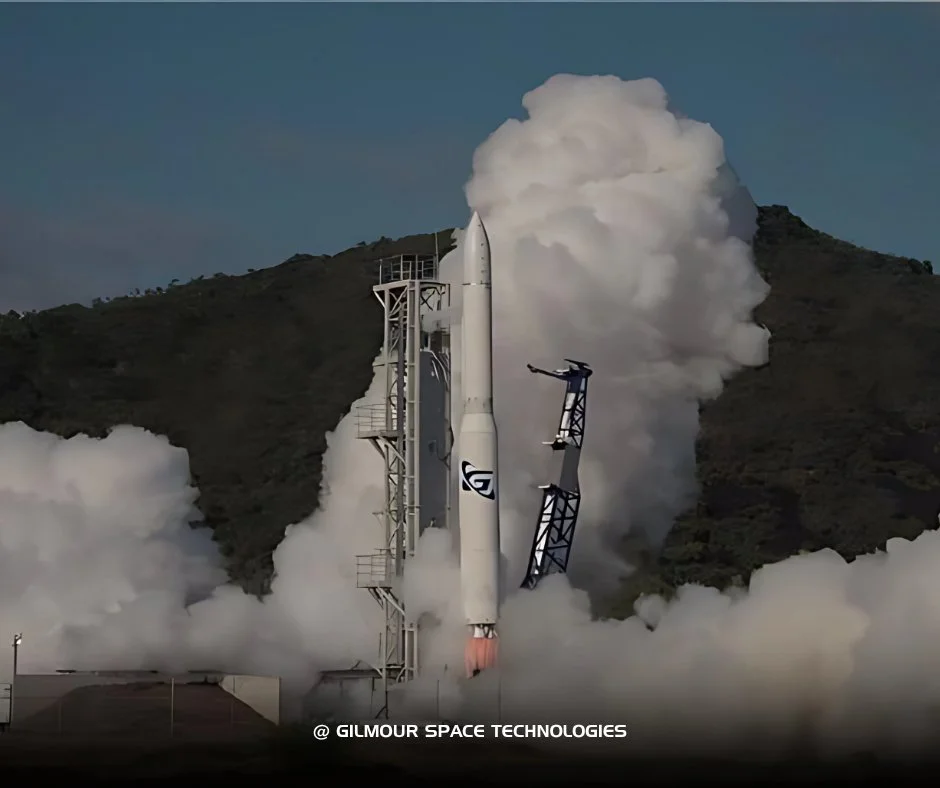The Weekly Rocket Report #36
07/28/2025-08/03/2025
Ricky Whitmore
Space Writer
Hello my friends and welcome back to The Weekly Rocket Report. We had quite a week, 9 launches, from all kinds of different rockets. Let’s jump right into the launches.
We begin in China, with the launch of Kunpeng-03, a commercial Earth observation satellite. The satellite was launched on Hyperbola 1, the first launch of Hyperbola 1 since a failure last July.
Hyperbola 1 launches Kunpeng-03. Photo Credit: https://x.com/CNSpaceflight.
Tuesday evening the world saw the first launch of a rocket from Australian soil, the test flight of Gilmour Space’s Eris rocket. Unfortunately, the test ended in failure after the rocket flew up slowly, then lurched to the side before eventually falling back to the ground. Despite this failure I have no doubt we will see more from Eris in the future.
Eris launches Test Flight 1. Photo Credit: Gilmour Space.
Later Tuesday night came the launch of Starlink Group 10-29. Falcon 9 carried the 28 payloads to orbit, and the rocket’s first stage returned to Earth, landing down range on the drone ship “Just Read The Instructions”.
Back to China where a Long March 8A blasted off carrying SatNet LEO Group 6. This launch added 9 communication satellites to SatNet’s ever growing constellation.
Long March 8A launches SatNet LEO Group6. Photo Credit: https://x.com/CNSpaceflight.
Wednesday morning saw a launch from India, where GSLV MkII blasted off carrying NISAR. NISAR is a joint effort between NASA and ISRO to map Earth’s land and ice masses.
GSLV MkII launches NISAR. Photo Credit: ISRO.
Wednesday night capped off a busy week for China as Kuaizhou 1 lifted towards the sky. The rocket, also on a return to flight after a failure back in March, was carrying PSRC-S1, an Earth observation satellite on behalf of Pakistan.
Kuaizhou 1A launches PSRC-1. Photo Credit: https://x.com/CNSpaceflight.
Back to the US where Falcon 9 launched Starlink Group 13-4. The rocket successfully placed the 19 satellites in orbit, and its booster flew back to land on the drone ship “Of Course I Still Love You”.
Falcon 9 launches Starlink Group 13-4. Photo Credit: SpaceX.
After a delay due to weather, Falcon 9 finally carried the 4 crewmembers of SpaceX Crew 11 to the International Space Station. The crew, which consisted of NASA Astronauts Zena Cardman and Mike Fincke, JAXA Astronaut Kimiya Yui, and Russian Cosmonaut Oleg Platanov. Following stage separation the rocket’s booster returned to Earth and landed at LZ-1, the final time the historic landing pad will be used after 10 years of service.
Falcon 9 launches SpaceX Crew 11. Photo Credit: SpaceX.
The final launch of the week occurred Sunday morning, with a launch from New Shepard, its 14th human spaceflight. The crew of NS-34 consisted of Arvi Bahal, Lionel Pitchford, Gokhan Erdem, Deborah Martorell, J.D Russell, and H.E Justin Sun. The booster returned following stage separation and landed back near the launch pad. After its short trip to space the capsule and its crew landed safely back in the Texas desert.
New Shepard’s Booster after a successful landing following NS-34. Photo Credit: Blue Origin.
That’s all for this week everyone. Big week for China this week, after having a few weeks of slow cadence. It will also be interesting to see how Gilmour Space moves forward with the Iris program. Looking ahead to next week I see Electron, more Falcons, and the first of Vulcan’s national security flights coming up. I will of course be back next week to break down whatever happens. See you then!
As always feel free to write to me at rickyew2112@gmail.com, or find me on X @Rickyew2112
Sic Itur Ad Astra
(Thus They Journey to the Stars)







